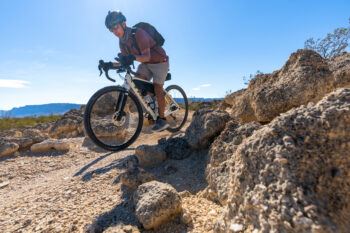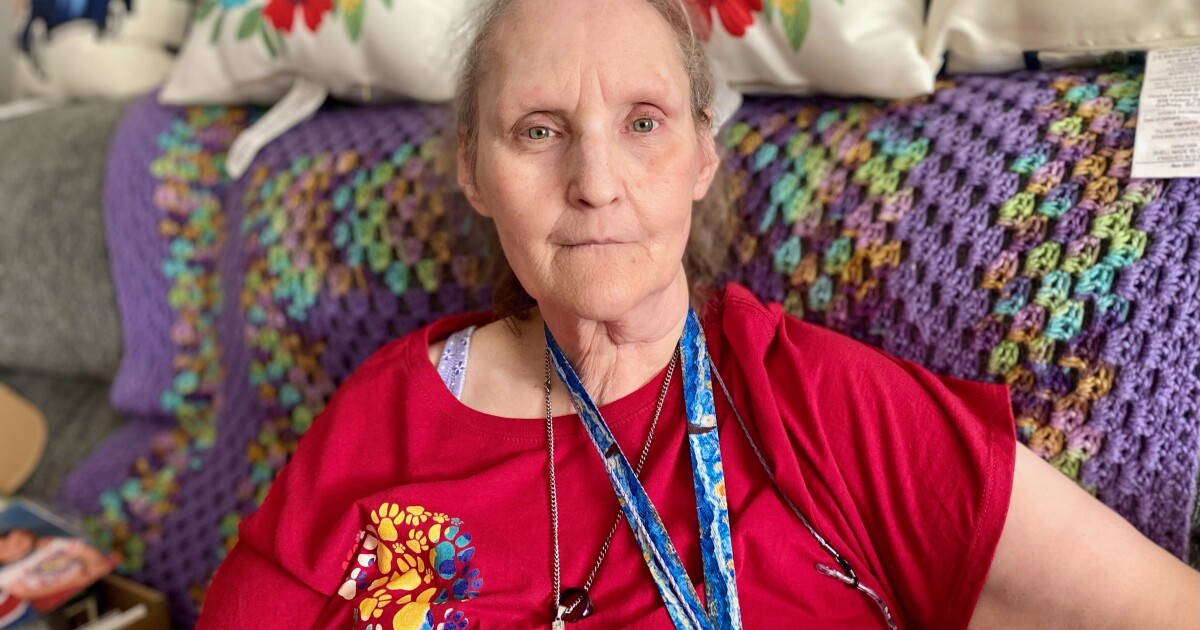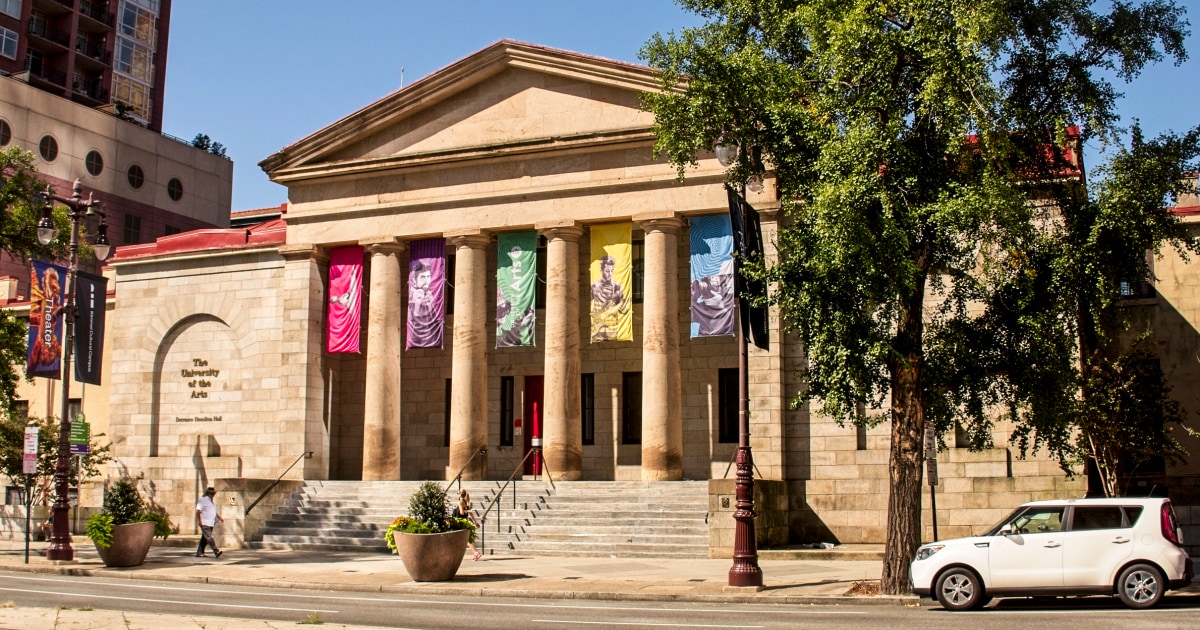Fitness
Exercise Could Help Your Heart by Calming the Brain: Study

MONDAY, April 15, 2024 (HealthDay News) — You know exercise is great for your cardiovascular health, but new research suggests that your brain has a lot to do with it.
It’s all about physical activity’s ability to lower stress levels within the brain, explained a team at Massachusetts General Hospital (MGH) in Boston.
Bolstering that finding, their study found that exercise brought the greatest heart benefits to people with histories of depression.
“Physical activity was roughly twice as effective in lowering cardiovascular disease risk among those with depression,” noted study lead author Dr. Ahmed Tawakol. He’s an investigator and cardiologist in the Cardiovascular Imaging Research Center at MGH.
The study was published April 15 in the Journal of the American College of Cardiology.
In the research, Tawakol’s team looked at a median 10 years of data on more than 50,000 people enrolled in the Mass General Brigham Biobank database. All of the participants kept records of their physical activity.
A subset of 774 also underwent brain scans and other tests measuring their stress-linked brain activity.
Over the decade of follow-up, almost 13% of the participants went on to develop heart disease, the researchers reported.
However, folks who met standard recommendations for physical activity were 23% less likely to receive such a diagnosis.
Those individuals also had markedly less brain activity associated with stress than people who exercised less, Tawakol’s team found.
Specifically, fitter folk tended to have greater activity in the brain’s decision-making, impulse-control center, the prefrontal cortex. This area is known to wield some control over the brain’s stress centers, the Boston team explained.
Overall, it appeared that lowered stress levels did have a big role to play in improved heart health, the researchers said. The fact that exercise seemed to especially help folks with a history of depression reinforced that notion.
“Effects on the brain’s stress-related activity may explain this novel observation,” Tawakol said in an MGH news release.
He believes that doctors should mention the brain-heart connection whenever they counsel patients about the benefits of exercise.
More information
Find out more about exercise’s brain benefits at the Cleveland Clinic.
SOURCE: Massachusetts General Hospital, news release, April 15, 2024

Fitness
Active and fit Eid ul Adha 2024: Best exercise ideas and workout tips for festive Bakrid days

Zarafshan Shiraz, New Delhi
While Eid ul Adha is a time for feasting and celebration, it is also an opportunity to prioritise physical activity and maintain an active lifestyle. Incorporating exercise into your Eid ul Adha festivities not only helps burn off extra calories but also boosts your mood and energy levels.
In an interview with HT Lifestyle, Dr Rajeshwari Panda, HOD – Nutrition and Dietetics Department at Medicover Hospitals in Navi Mumbai, recommended some exercise ideas and workout tips to keep you moving during the Bakrid celebrations –
- Morning Movement: Start your Eid ul Adha celebrations on the right foot with some morning movement. Whether it’s a brisk walk, a light jog or a Yoga session, getting your body moving first thing in the morning sets a positive tone for the day ahead. Invite family and friends to join you for a group workout to promote accountability and camaraderie.
- Active Family Games: Turn physical activity into a fun-filled family affair by organising active games and challenges. From relay races and scavenger hunts to backyard sports tournaments, there are countless ways to get the whole family moving and engaged. Encourage friendly competition and celebrate each other’s achievements as you bond over shared experiences.
- Outdoor Adventures: Take advantage of the beautiful weather and explore the great outdoors during Eid ul Adha. Whether it’s hiking, cycling or kayaking, outdoor adventures offer a refreshing change of scenery and an opportunity to connect with nature. Choose activities that you enjoy and make them a part of your Eid ul Adha traditions.
- Mind-Body Practices: Incorporate mind-body practices such as Yoga, tai chi or meditation into your Eid ul Adha celebrations to promote relaxation and inner peace. Find a quiet spot outdoors or create a serene atmosphere indoors where you can unwind and recharge your body and mind. Focus on deep breathing and mindfulness to reduce stress and enhance well-being.
This Eid ul Adha, let’s prioritise our health and well-being by embracing a balanced approach to eating and staying active. By incorporating healthy eating tips and exercise ideas into our celebrations, we can enjoy the festivities while nurturing our bodies and minds.
Whether it is mindful eating practices or joyful movement, let’s make health and wellness a cornerstone of our Eid ul Adha traditions. Eid Mubarak!
Fitness
The five best exercises for bone health

Resistance training, impact exercises and multi-directional training combined will produce a 12 to 15 per cent increase in bone density over a nine- to 12-month period when performed correctly. To give you an idea of the load required, multiple research data has shown that the best results come from using squats, lunges and deadlifts loaded with a resistance that allows as few as five or six reps per set for an area. In other words, pretty heavy!
However, I say this with a note of caution as most bodies are not ready for that level of loading without preconditioning, so we need to produce bone stress through small amounts of impact, using progressive weight level increases, lateral movements for stress variety and to ensure we use the upper and lower body combined rather than focus on the hips alone. For anyone with osteopenia or those wishing to prevent it, plyometric exercises (involving jumping) also play a key role in adding positive bone stress through the small vibration and higher muscle/tendon stress and trauma that the impact creates.
In our bone health clinic in my own facilities, our clients and patients use a specific strengthening machine that applies resistance and pressure to safely test and redevelop the bones to a high level without risk. Without that machine there are still several exercises you can perform to gain the strength, stability and balance needed to then be able to load heavily and get the greatest bone strength return.
In short, I want to build you up to prepare you to build even more! This is the programme you should follow…
1. Lateral jumps
Start with 12-16 reps and build to around 30 over a period of weeks.
Fitness
Does Exercise In Greenspace Boost The Individual Health Benefits Of Each?

Physical activities done in natural settings could be a boost for both fitness and mental health, especially since most Americans do not get enough exercise or spend enough time outdoors.
Michael Miller/Texas A&M AgriLife Marketing and Communications
Health practitioners and fitness buffs have long known that regular physical activity offers numerous health benefits, including the prevention of chronic conditions such as cardiovascular disease, diabetes, some cancers and osteoporosis.
In addition, exercise enhances immune function and pain control, reduces fall risk and extends life expectancy. Mental health benefits include improved mood, reduced anxiety and decreased risk of dementia and depression.
Despite all these benefits, more than three out of four adults in the United States get far less exercise than the recommended 150 to 300 minutes a week of moderate physical activity or 75 to 150 minutes a week of vigorous physical activity.
A review of research suggests exercising in a park or other natural setting is more beneficial than exercising indoors.
Michael Miller/Texas A&M AgriLife Marketing and Communications

Studies have also found that outdoor places such as parks and trails are effective settings for physical activity. The COVID-19 pandemic made this especially clear. Moreover, being in nature provides physical and mental health benefits similar to those of physical activity.
To date, little has been known about any potential additive benefits of engaging in physical activity in natural settings. Could being outdoors increase the effects of exercise while also encouraging more people to exercise? And if so, how could health professionals promote this behavior?
To answer these questions and more, Jay Maddock, Regents Professor with the School of Public Health at Texas A&M University and director of the university-led, collaborative Center for Health & Nature, along with Howard Frumkin, Hagler Fellow and senior vice president and director of the Land and People Lab, assessed the current scientific evidence regarding physical activity in natural settings and developed strategies for promoting these activities.
Their study, published in the American Journal of Lifestyle Medicine, identified several factors that affect how often people visit parks and natural settings, the extent to which they engage in physical activities once there and the benefits they get from this activity.
Maddock and Frumkin found that research suggests exercising in a park or other natural setting is more beneficial than exercising indoors. These studies focused on short-term outcomes of less than one year, however, and whether these benefits occur over the long term remains to be seen.
“Despite this, the research is clear that natural settings could be an effective venue for promoting physical activity,” Maddock said. “People generally enjoy being outdoors, with parks, trails and community gardens being the most popular venues.”
Factors that make these venues more attractive to visitors include physical features such as community centers, playgrounds, lighting and clear signage, as well natural features such as tree canopy and bodies of water that are well maintained. Activities such as classes and festivals also contribute to their popularity, as do a welcoming environment, a perception of safety, and visitors’ strong feeling of connectedness to nature and belief that spending time in these spaces is important.
“Parks and trails are particularly important due to their accessibility and widespread availability, but access varies significantly by geography, and rural areas often have less access to natural spaces because they have more privately held land,” Maddock said. “For example, nearly 98 percent of Illinois residents live within half a mile of a park, compared to only 29 percent in Mississippi.”
Maddock and Frumkin also found that use of parks and greenspaces for physical activity varies across demographic groups, with men more likely than women to use these spaces for physical activity. In addition, a study of parks in Los Angeles found that Black adults are less likely than white adults to engage in physical activity in parks, while English-speaking Latinos are equally likely and Asian/Pacific Islanders are more likely.
“Some groups — Black, Indigenous, and other people of color and immigrant and refugee populations, for example — often have experienced historic or current discrimination that hinders their use of natural spaces, and they routinely have less access to high-quality parks,” Frumkin said. “In addition, children, the elderly and people with disabilities face challenges in accessing natural spaces. Ensuring that these spaces are safe and easy to navigate, with appropriate programming, could help increase their use of parks and other natural settings.”
With these complexities in mind, Maddock and Frumkin offer four options that health care professionals could implement to encourage the use of parks and other natural settings by their patients.
One is simply to “prescribe” nature contact to patients.
“Recommending that patients spend more time in these settings is known as nature prescriptions or ‘ParkRx,’ and while more research is needed, the studies to date suggest that this approach is effective,” Maddock said.
Another is for health professionals to model this behavior by engaging in it themselves. This modeling has been found to be effective in promoting healthy behaviors while also enhancing the well-being of the health professionals.
A third approach is for health professionals to engage in community efforts that promote the use of outdoor spaces, such as Houston’s Be Well Communities initiative, which is supported by the M.D. Anderson Cancer Center.
Finally, health professionals could help create and maintain parks and greenspaces by steering funds into these efforts through Community Health Needs Assessments, Medicaid funds and funds from health care conversion foundations.
“It is clear that the use of parks and natural settings for physical activities could be a potentially powerful tool for promoting two important health behaviors simultaneously,” Maddock said. “This could be especially important given that the majority of Americans do not get enough exercise or spend enough time outdoors.”
-

 Movie Reviews1 week ago
Movie Reviews1 week agoFilm Review: I Used To Be Funny offsets its humorously-adjacent title with a dark, heartbreaking temperament. – The AU Review
-

 World1 week ago
World1 week agoEconomy, migration: Voters' main concerns ahead of elections
-

 Politics1 week ago
Politics1 week agoTrump campaign accelerates vetting of potential running mates
-

 News1 week ago
News1 week agoWoman handcuffed in police car hit by freight train reaches $8.5M settlement
-

 Politics1 week ago
Politics1 week agoHunter Biden trial enters 3rd day with cross-examination of FBI agent
-

 Politics1 week ago
Politics1 week ago'It's absurd': Congress takes bipartisan action after Cuban officials' tour secure parts of major airport
-

 World1 week ago
World1 week agoFamine ‘likely’ already stalking northern Gaza: Report
-

 Politics1 week ago
Politics1 week agoNew York appeals court judges in Trump case routinely donated to Democrats, records show


















